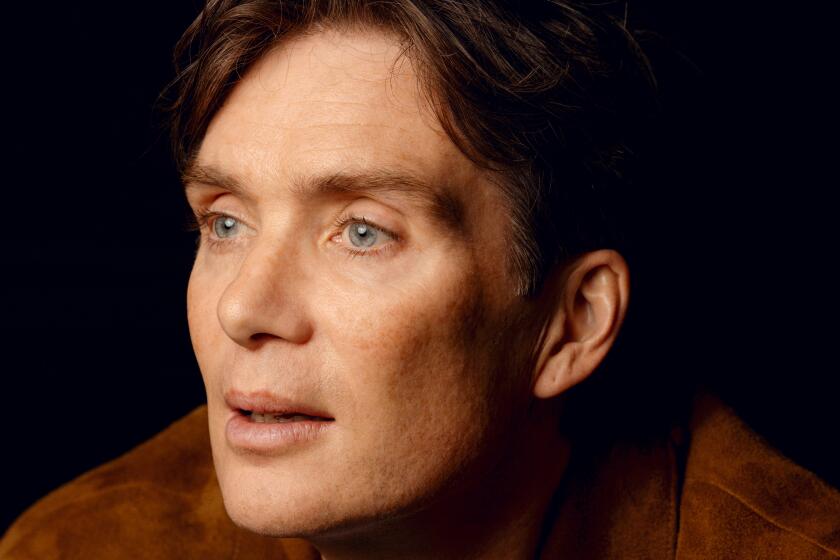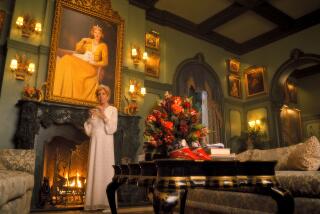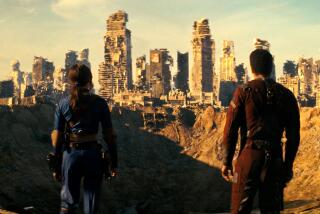Building history from the ground up with ‘Oppenheimer’
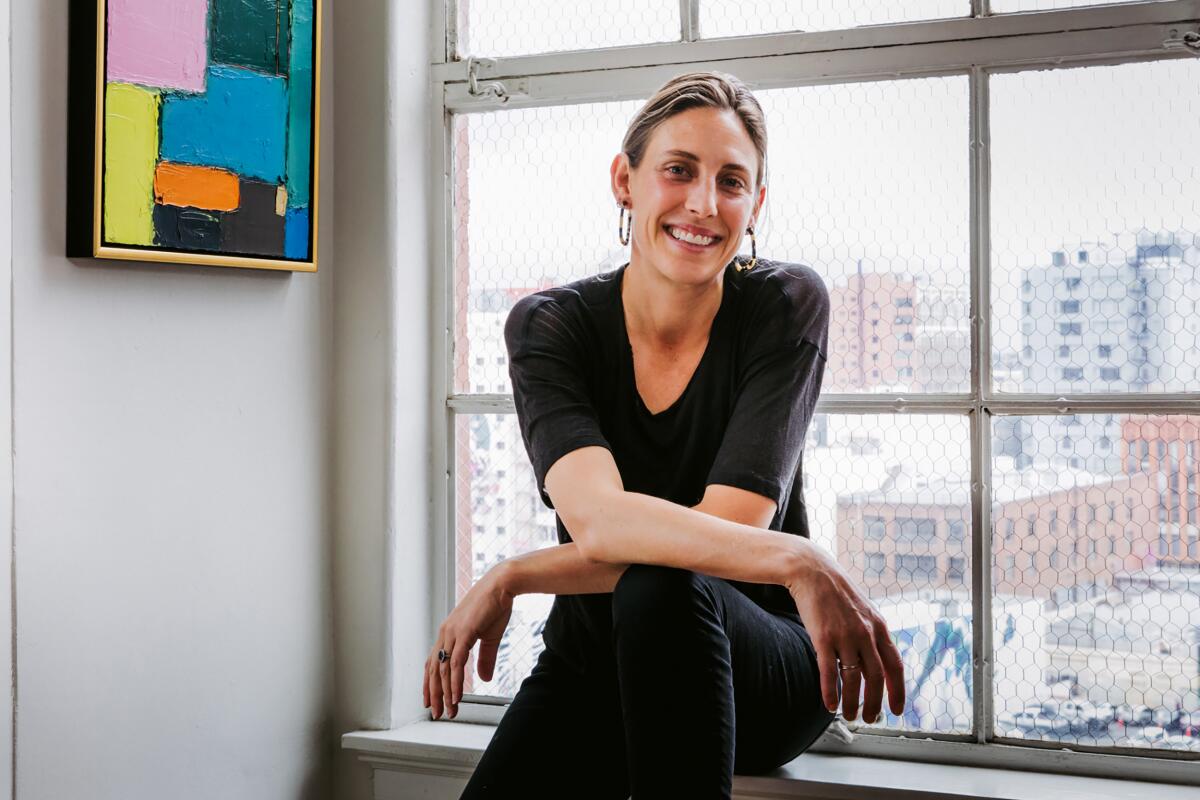
Give “Oppenheimer” production designer Ruth De Jong a choice between the control that comes with a studio and the vagaries of outdoor filming, and she’ll build in the wide open every time.
“To me, the fascination of getting into production design is to have nature be your backdrop,” says De Jong, whose heavy-duty gigs before working for Christopher Nolan include the episodic western “Yellowstone” and Jordan Peele’s “Nope.” She even lives in Big Sky Country, Zooming from her home in Montana (where she moved after working on “Yellowstone”). “I like to be able to have an expanse, the elements, the weather, the landscape. To set your sets under a sun that’s revolving, so your set is changing light all day versus on a soundstage, where everything is manipulated. It’s absolutely my preference to go off to the middle of nowhere. And it’s harder.”
Diving into an explosive episode of 20th century history that launched the nuclear age, director Christopher Nolan unleashes the most ambitious film of his career.
When it came to erecting the film’s version of J. Robert Oppenheimer’s Los Alamos — the remote southwestern outpost that housed the Manhattan Project — De Jong didn’t have an Army Corps of Engineers and $2 billion at her disposal, as the legendary physicist did. So she and her dedicated team absorbed historical maps, plans and pictures and created a quarter-scale version with key buildings around a central T intersection.
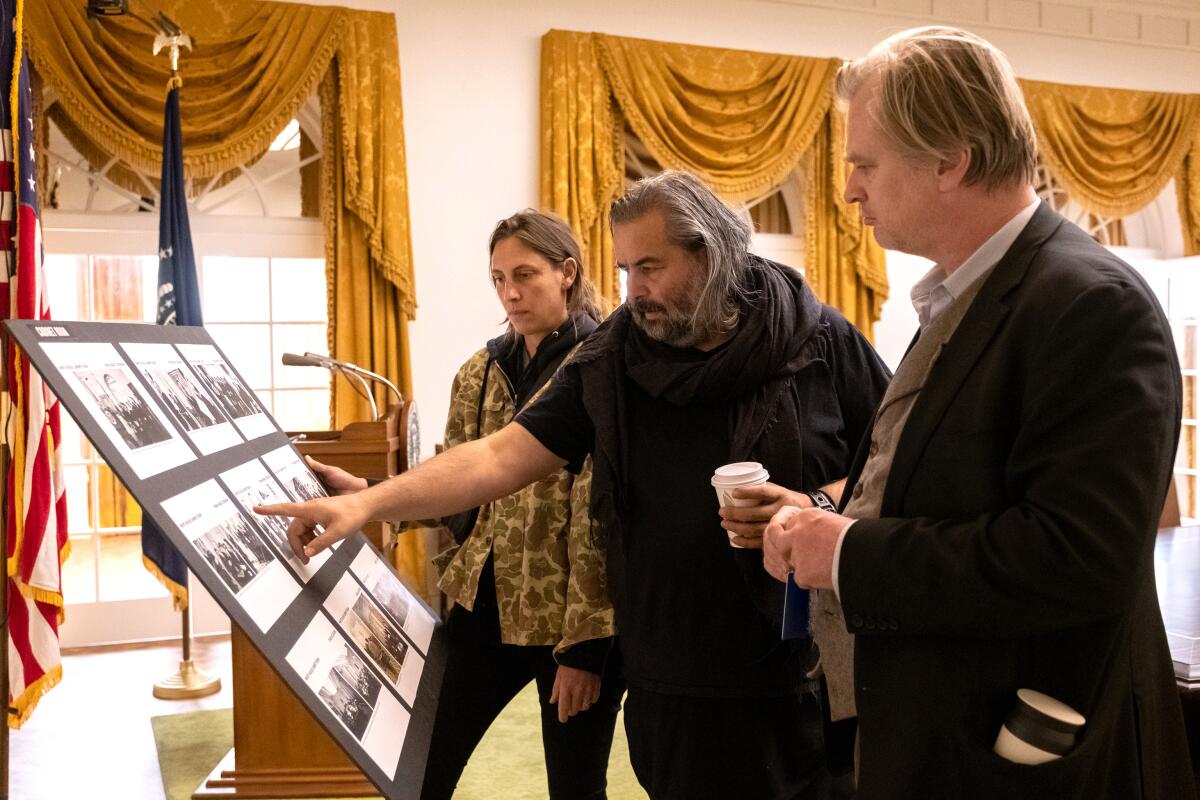
What De Jong achieved also suggests an impressive difference from Oppenheimer’s construction project: In the ‘40s, a town already existed from which to expand. De Jong built hers from scratch on a barren mesa scouted in New Mexico that offered epic 360 views. “There was no infrastructure,” she said. “We had to carve a road, just so we could drive up there in four-wheel drives. It literally rose out of this plateau, what you see in the movie.”
And yet, with only eight weeks to build the movie’s Los Alamos, De Jong had to let go of her natural obsessiveness, the kind that says, if a street runs a certain way, and a building was in a specific spot, the set should reflect that, too. “Chris said to me, ‘You have to divorce yourself from the research. We are making an essence of Los Alamos. We are telling a story, I’m not making a documentary.’”
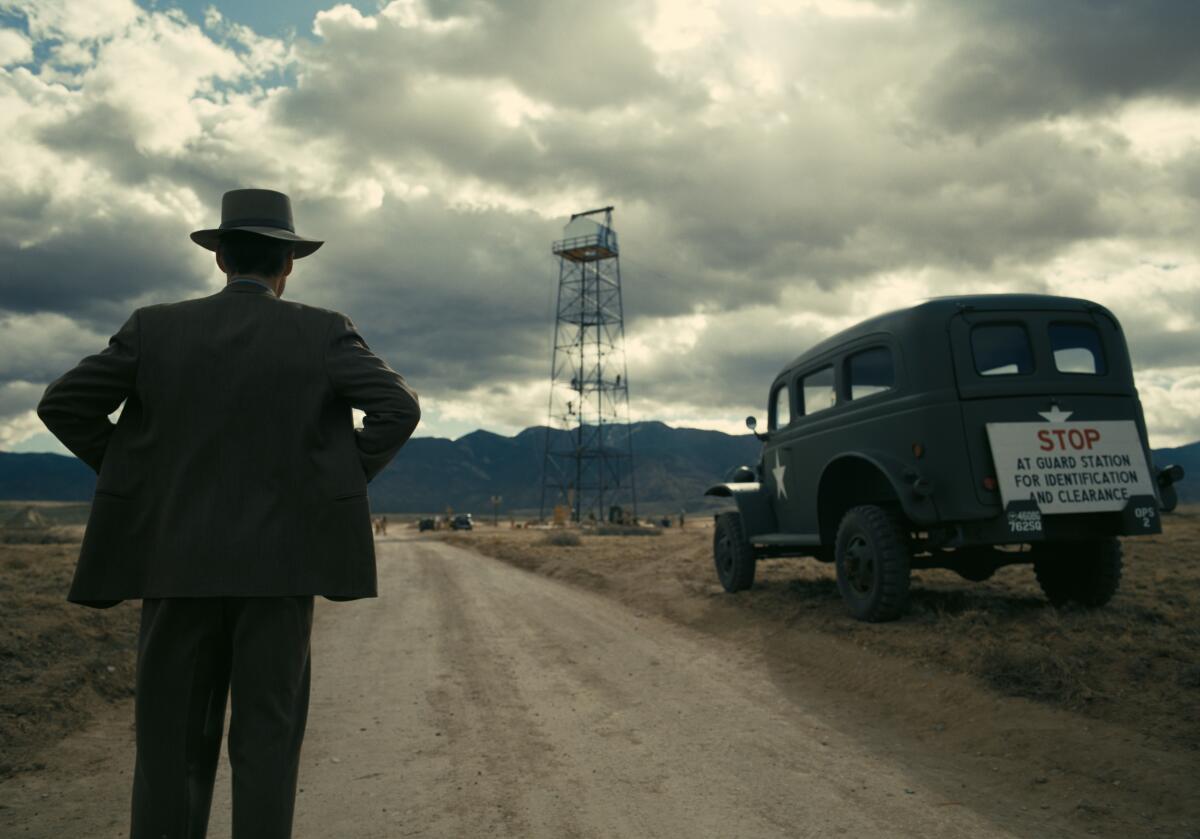
Is it, then, the illusion of documentary, perhaps? De Jong is always seeking to ground a script, so a viewer feels transported by a set’s reality, not preoccupied by it. As she puts it, “How does the viewer get lost so that they aren’t distracted by the sets? It’s something I find challenging to have to tackle each time. How do sets disappear to where people go, ‘Oh, they didn’t have to build anything. That was just there.’”
Her education in the artful authenticity of a movie set couldn’t have been more top-notch, considering her mentor and close friend is legendary production designer Jack Fisk. “Like Jack, I came from fine arts and studied photography and light, sculpture and painting,” says De Jong, whose first big job was with Fisk on “There Will Be Blood.” “I was under Jack for seven years as his art director, and he had a specific way of working that resonated with me as an artist. I think of production design as essentially a giant painting in the real world.”
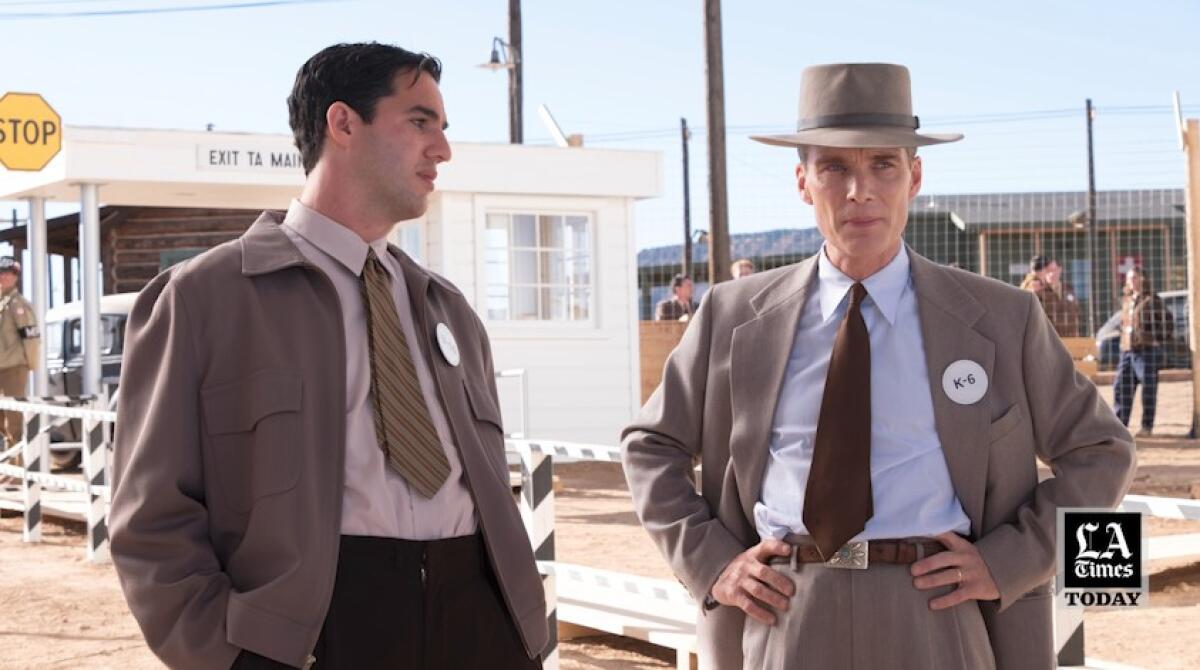
The list of great directors De Jong has worked with is impressive — from Terence Malick to David Lynch — but she says Nolan stands out in one essential way. “I’ve truly never met a director who knows what every single department does, and needs. He was deep in it with us,” she says, especially when it came to brainstorming on a budget. “Chris knew ways to support us. He’d be like, ‘Ruth, have you considered Home Depot sheds? Could that get us there?’ We laughed, and Chris was like, ‘No, I’m serious.’ And we used Home Depot sheds, because we could hit our number!”
The actor and director Christopher Nolan share a mutual interest in conveying a character’s emotional conflict through close-ups that linger on an actor’s face and allow the audience to feel inner turmoil.
At the same time De Jong is thinking about large-scale components, she’s mindful of how even office sets feel “appropriate and purposeful, not just putting things on a set to say it’s 1945.” Authenticity meeting character work, as it were, so when lead actor Cillian Murphy opens a drawer or looks around Oppenheimer’s Los Alamos office, he’ll find not just something apt to the period, but objects relatable to who he’s playing.
“I think it’s very important to design to be accurate, but also natural to the spaces. I think all of them appreciated the daily drive out to Los Alamos, because there was no cell service. No one had it. So your head is in it, your mind is in it, you’re rolling up to town the same way Oppenheimer would have done every day. It puts them right there.”
De Jong understands that a lot of production design work is now done using modeling programs to fill green screens or soundstages, but those jobs don’t satisfy her location-driven spirit. “The tangibility of having to physically be present to build, I never want that to disappear,” she says. “When they say, ‘Keep children off screens,’ I’m like, ‘Let’s keep adults off them!’ Get out there in the world and let’s create this!”
More to Read
From the Oscars to the Emmys.
Get the Envelope newsletter for exclusive awards season coverage, behind-the-scenes stories from the Envelope podcast and columnist Glenn Whipp’s must-read analysis.
You may occasionally receive promotional content from the Los Angeles Times.

